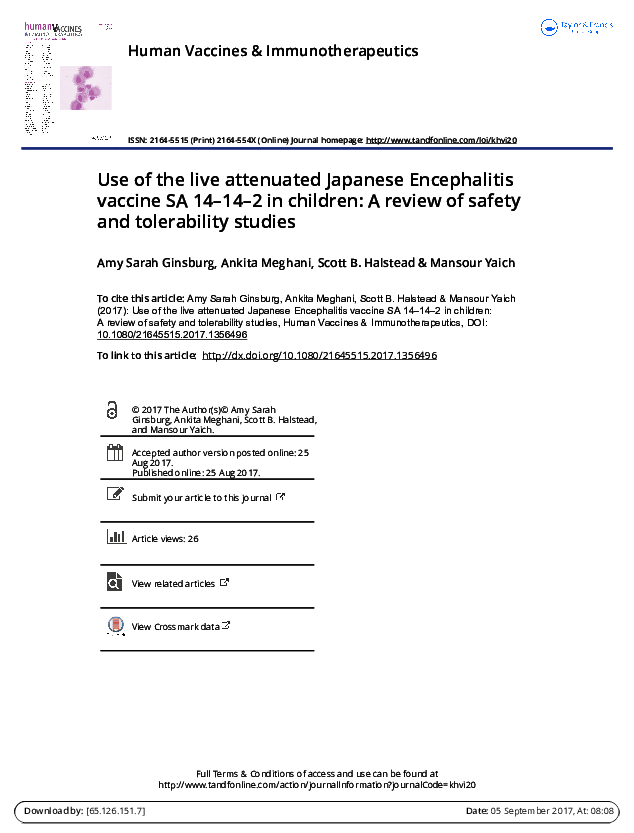
Study: Research
Use of the Live Attenuated Japanese Encephalities Vaccine SA 14-14-2 in Children: A review of safety and tolerability studies
Publication year:
2017
English
Format:
pdf (934.5 KiB)
Publisher:
Human Vaccines & Immunotherapeutics
Japanese encephalitis (JE) is the leading cause of viral neurological disease and disability in Asia. Some 50– 80% of children with clinical JE die or have long-term neurologic sequelae. Since there is no cure, human vaccination is the only effective long-term control measure, and the World Health Organization recommends that at-risk populations receive a safe and effective vaccine. Four different types of JE vaccines are currently available: inactivated mouse brain-derived vaccines, inactivated Vero cell vaccines, live attenuated SA 14–14–2 vaccines and a live recombinant (chimeric) vaccine. With the rapidly increasing demand for and availability and use of JE vaccines, countries face an important decision in the selection of a JE vaccine. This article provides a comprehensive review of the available safety literature for the live attenuated SA 14–14–2 JE vaccine (LAJEV), the most widely used new generation JE vaccine.
Read full abstract
Authors
View & Download
Document information
Publisher
Format
Content type
Region
Topics
Rights
© Author/Publisher
Found a mistake? Help us improve!
If you have noticed a document assigned to the wrong author or any other inaccuracies, let us know! Your feedback helps us keep our data accurate and useful for everyone.
Share
Link
